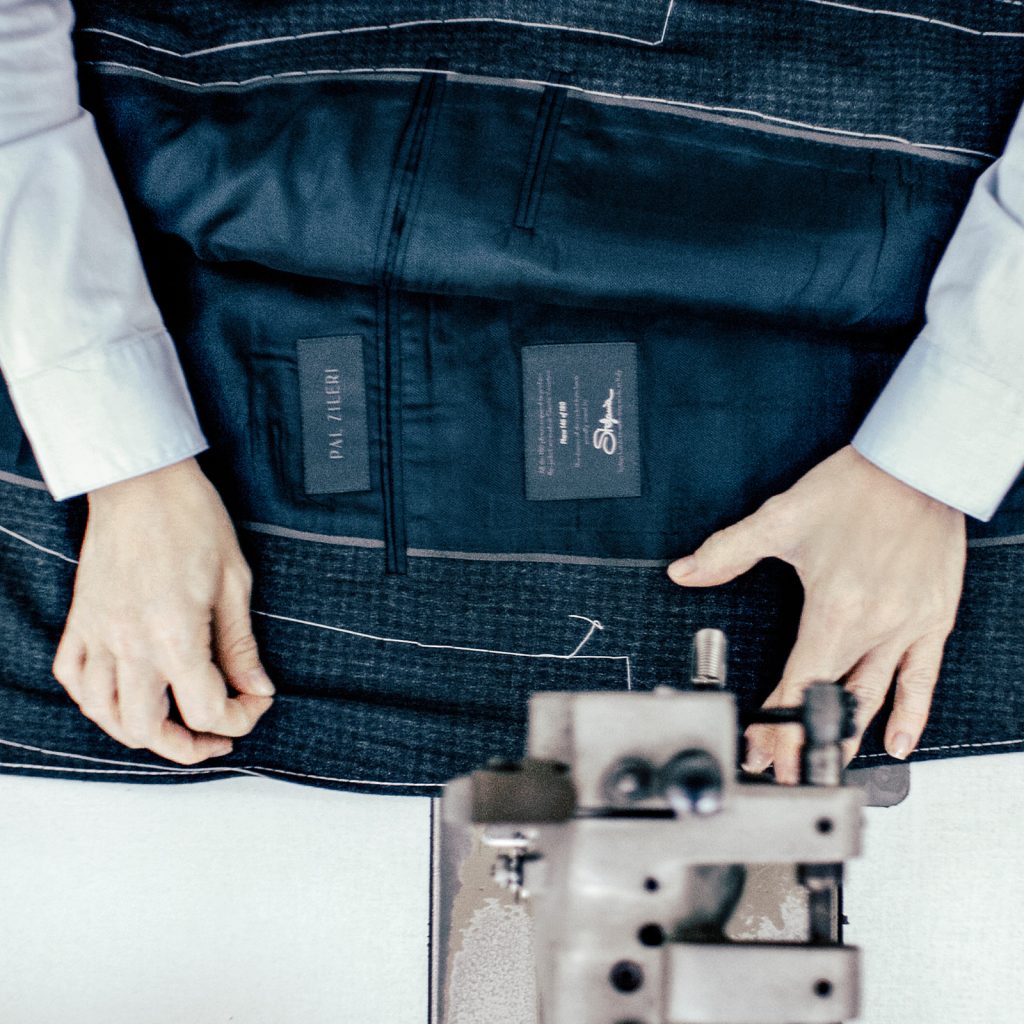Factory Visit: Cotonificio Albini, Albino
Behind the scenes of the 139-year-old Italian fabrics enterprise

Visiting the Albini Group—a glorious Italian enterprise that specializes in fabrics for shirting—is an experience of contrast. It’s a facility that feels futuristic, while remaining in the tradition of its deep history. It’s a busy, mechanical factory located in the picturesque Italian town of Albino—in a valley surrounded by the Alps. Founded in 1876 by Zaffiro Borgomanero, today Albini is run by the fifth generation of the original family, and we witnessed the production of fabrics that will become sophisticated, quality shirts sold all over the world.

Every year Albini Group produces an enormous 20,000 new fabrics and over 4,000 exclusive variations conceived for specific clients (these are developed by 30 textile designers). The list of international clients is incredibly long and—in some cases—strictly confidential. As well as working with some of the most talented independent tailors around the world, they provide fabrics to the likes of Burberry, Etro, Brioni, Armani, Zegna and more.

While production is a quintessential, time-honored Italian mix of machines and handmade processes, Albini is a multinational company. In addition to five factories in Italy, they own sites in Egypt and the Czech Republic. There’s a balance of tradition production and future-forward technology: some phases are completely automated (including the coloring, weaving and warehouse organization) while others are entirely manual.

Albini Group’s president Silvio Albini tells CH, “After many years of hard work, today we can finally say that our company controls the entire production—from the cotton seed to finishings. In this long process we can control the most intrinsic qualities of our product. We have also reached a complete traceability and we know where every meter of our fabric was made.” While showing us each single step of the production process, the staff reveal an authentic enthusiasm and a rare generosity—along with true pride for their part played in the creation of such quality products.

While fabrics may be flat, they’re not two-dimensional. Weaving is not just about wrapping and wefting, but if the technology is sufficiently advanced the woven fabric can come out of the machines in unlimited tridimensional variations. Optical effects and peculiar shapes can be created using different techniques, threads, colors and materials. (In fact, there can be over 16,000 threads in one single square meter of fabric.) Some fabrics are so precious that they are called “diamonds,” but unlike a diamond, they are soft. Touch is—of course—one of the most important factors in shirting. It differs when fabrics are single- or double-ply. In the second case, two separate threads are rolled up together so that they’re more resistant and colors become more shiny and long-lasting. You can tell the difference when caressing the fabrics. Other important processes include the various washing steps and mechanical procedures aimed at fixing colors. Finally, after these last stages, the fabric is ready to be quality-controlled, before heading off to become a shirt.

When wandering through Albini, it’s the contrast between the sci-fi-esque plant and the archive room that embodies what they stand for most. Walls of ancient books and catalogues with the fabrics glued inside (which date back to 1796) are still in usable condition, lovingly preserved, with colors so bright they seem to have been produced mere minutes before.
Images by Paolo Ferrarini












